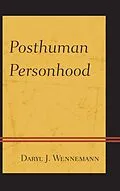Posthuman Personhood takes up the ethical challenge posed by Francis Fukuyama's work, Our Posthuman Future. Daryl J. Wennemann argues that the traditional concept of personhood may be fruitfully applied to the ethical challenge we facein a posthuman age. He draws upon Wilfrid Sellars' treatment of the concept of a person within "the manifest image of man in the world." Sellars proposed that we develop a stereoscopic view of reality that includes both a scientific understanding of the world and a meaningful place for persons living and acting in the world. Following Mary Anne Warren, Wennemann develops a distinction between two meanings of the term "human," a biological meaning and a moral meaning, and maintains that all (biologically) humanbeings are persons. But, it is not necessarily the case that all personsmust be (biologically) human. After drawing on a contemporary version of Kant's distinction between a theoretical possibility and a real possibility, the book posits that biologically non-human persons like robots, computers, or aliens are a theoretical possibility but that we do not know if they are a real possibility. Finally, Wennemann describes an ethic of self-limitation for the posthuman age.
Autorentext
Daryl J. Wennemann received his BA and MA in philosophy from St. Louis University and his Ph.D. in philosophy from Marquette University. He is currently an associate professor of philosophy at Fontbonne University. He is the co-author of Applied Professional Ethics: A Developmental Approach for Use with Case Studies with Greg Beabout and has published a number of scholarly articles.
Inhalt
Preface
Acknowledgements
Chapter 1: Welcome to the Posthuman Age
Chapter 2: More Human Than Human
Chapter 3: Distinguishing Distinctions
Chapter 4: The PosthumanB Age and PragmaCentrism
Chapter 5: PosthumanB Impure Ethics
Chapter 6: The AnthropoMcene Age
Chapter 7: The PostHumanB Predicament
Bibliography
Index
About the Author
